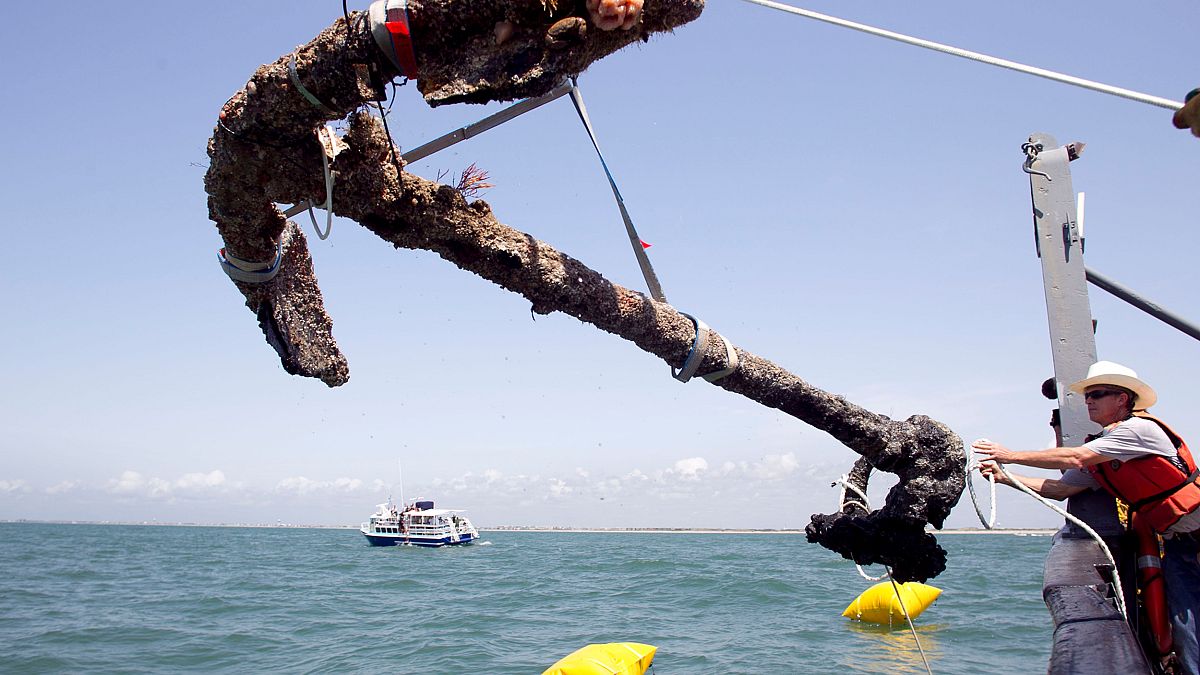Conservators uncovered 16 fragments of paper aboard Blackbeard's ship, Queen Anne's Revenge, that belong to a nautical work from 1712.
Most references to Blackbeard point to his pillaging and rape. But now a new perception of the notorious pirate arises: a Blackbeard who may have been an avid reader, according to a discovery in a cannon chamber of his ship.
Although researchers found thousands of artifacts in the 1996 salvage of Blackbeard's shipwrecked barge, no artifact was as unusual as their most recent discovery: 16 fragments of paper with still-legible print that is believed to have come from a 1712 book on nautical voyages.
Researchers and conservators from the Queen Anne's Revenge Shipwreck Project, or QAR, a division of the North Carolina Cultural Resources Department, found the fragments inside the cannon of a breech chamber, according to a Facebook post from the organization.
Archaeologists from Florida-based research firm Intersal Inc. uncovered the vessel in 1996. It was shipwrecked in North Carolina, where it is believed that the ship's crew engaged in fierce battle in 1718 with volunteers from the British Royal Navy who killed Blackbeard.
The papers — the largest of which was the size of a quarter — were discovered in May 2016, the The Associated Press reported. But the conservators sent them off to a specialist for examination. The process took more than a year to yield results.
Words like "south" and "fathom" suggested that the scraps were from a maritime or nautical work. But the biggest clue was the word "Hilo," which led Johanna Green, a lecturer in information studies at the University of Glasgow in Scotland, to conclude that the scraps originally were part of a book called "A Voyage to the South Seas, and Round the World, Perform'd in the years 1708, 1709, 1710 and 1711" by Capt. Edward Cooke.
Blackbeard captured a French slave ship called La Concorde in 1717 and renamed it the Queen Anne's Revenge, according to QAR. It would become the ship that battled the Royal Navy and suffered shipwreck.
Although some knowledge on the pirate and his ship exists, the book's origin is still unclear. QAR conservators speculate that the book could have belonged to one of Blackbeard's crewmen or to one of the crewmen who surrendered the ship to him.
The shipwreck is regarded as a national treasure, particularly because it is one of the oldest uncovered shipwrecks in North Carolina, according to QAR's website.
A representative from QAR couldn't immediately be reached for comment.




